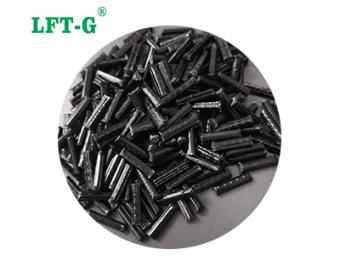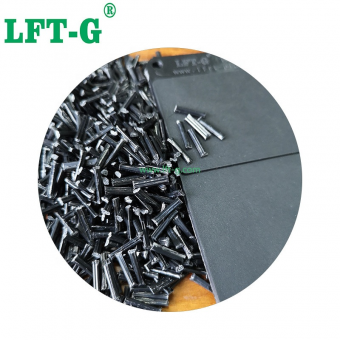-
pa66 gf35 granulés polyamide nylon66 polymère thermoplastique longue fibre de carbonefibre de carbone longue pa66 recyclage des granulés polyamide66 granulés de nylon
- nylon polyamide renforcé de fibres de carbone longues pa66
- fibre longue renforcée pa66
- pa66 gf35 granulés
- recycler le thermoplastique pa66 longue fibre de carbone
- composites à fibres longues nylon66
- granules thermoplastiques polyamide 66 vs nylon 66
Tags :
-
pa66 longue matière thermoplastique renforcée de fibre de carbone résine polyamide 66 nylonhaute qualité pa66 matériau noir à haute résistanceAfficher plus
-
lft-g PA66 nylon66 remplissage fibre de carbone longue 20%-60% plastique modifié haute performance couleur naturelleMaterial Introduction In 1935, Wallace Carothers, a scientific researcher at DuPont, and his team successfully synthesized PA66 by condensation of adipic acid and adipic diamine for the first time, and DuPont completed the commercial production of PA66 fiber in 1939. Starting in the 1950s, PA, including PA6 and PA66, was developed for the production of injection molded products to replace metal to meet the requirements of light weight and cost reduction of industrial products. At present, PA66 is the most used PA species other than PA6. PA66 Scientific name: Polyhexanediamide Abbreviation: PA66 Common name: Nylon 66 PA66 has many similarities with PA6. PA66 is also a transparent to milky white granule that can take on almost any color with the addition of a colorant (masterbatch) specific for polymers. Material properties Similar to the basic properties of PA6, PA66 also has low specific gravity, high tensile strength, wear resistance, good self-lubrication, and excellent impact toughness. In addition, because the number of hydrogen bonds in PA66 is more than in PA6, the intermolecular force of PA66 is stronger than the intermolecular force of PA6, which makes the internal structure of PA66 more compact than PA6, with better thermal properties, higher rigidity and toughness, better dimensional stability, lower water absorption, and more wear resistance. However, PA66 has a higher market price than PA6 and is not as easy to process and mold as PA6. Like PA6, PA66 can also add a certain percentage of glass fiber, carbon fiber, etc. to improve the performance and meet the application needs of different products. The following table is a PA66-LCF30 performance table produced by Xiamen LFT composite plastic company. Materials Application PA66 has higher hardness, mechanical strength, toughness, self-lubrication, friction resistance, heat resistance after the addition of carbon fiber, and is widely used in automotive parts, electrical and electronic, as well as mechanical and engineering parts and other fields. Automotive parts PA66's low specific gravity, high rigidity, strong toughness, heat resistance and gasoline resistance make it widely used in automotive modules, automotive structural parts, automotive interior and exterior parts, automotive transmission system and chassis shield, automotive fuel system, automotive ignition system, etc. The products involve automotive cable channel modules, structural parts of front-end components of automotive sunroof system, automotive rearview mirror bracket, automotive radiator, headlight support frame, door module, seat structural parts, seat shell and backrest, dashboard skeleton, air cooler fan, etc. Electrical and electronics PA66's good insulation, flame retardancy and corrosion resistance make it suitable for making various connectors, switches, sockets, terminal blocks, wire coverings, wire ties, insulating spacers, circuit breaker housings, transformer bobbins, retaining clips and motor parts after glass fiber reinforcement. Mechanical and engineering parts PA66's good rigidity, toughness, self-lubricating properties, heat and abrasion resistance make it suitable for manufacturing various nuts, screws, cable ties, worm gears, rotating wheels, gears, pump impellers, pulley sleeves, bushings, solenoid distribution valve seats, power tool housings, pipes, luggage racks, fan housings, appliance housings, door and window frames, cable drag chains and large machine tool baffles. Details Number Color Longueur Goûter Emballer MOQ Délai de livraison Port de chargement PA66-NA-LCF30 Couleur naturelle (peut être personnalisé) 12mm environ (peut être personnalisé) Disponible 20kg/sac 20 kg 7-15 jours après expédition Port de Xiamen D'autres produits que vous vous demandez peut-être pa6-lcf pa 12 -lcf p e e k-lcf Questions fréquemment posées Q. Comment choisir la méthode de renforcement et la longueur du matériau lors de l'utilisation d'un matériau thermoplastique renforcé de fibres longues ? A. La sélection des matériaux dépend des exigences des produits. Il est nécessaire de déterminer dans quelle mesure le contenu est amélioré et dans quelle mesure la longueur est plus appropriée, qui dépendent des exigences de performance des produits. Q. Dans quelles circonstances la fibre longue peut-elle remplacer la fibre courte ? Quels sont les matériaux alternatifs courants ? A. Les matériaux traditionnels en fibres discontinues peuvent être remplacés par des matériaux LFT en fibre de verre longue et en fibre de carbone longue dans le cas de clients dont les propriétés mécaniques ne peuvent pas être satisfaites ou lorsque des substituts mé...
- pellets de pa66 autodidactes
- granulés pa66 renforcés à haute résistance et haute ténacité
- renforcé polyamide66 lcf
- polyamide 66 plastiques techniques lcf
- PA66 6 pastilles lcf double vis
Tags :

 email
email français
français English
English Deutsch
Deutsch русский
русский italiano
italiano español
español português
português العربية
العربية 日本語
日本語 한국의
한국의 中文
中文














